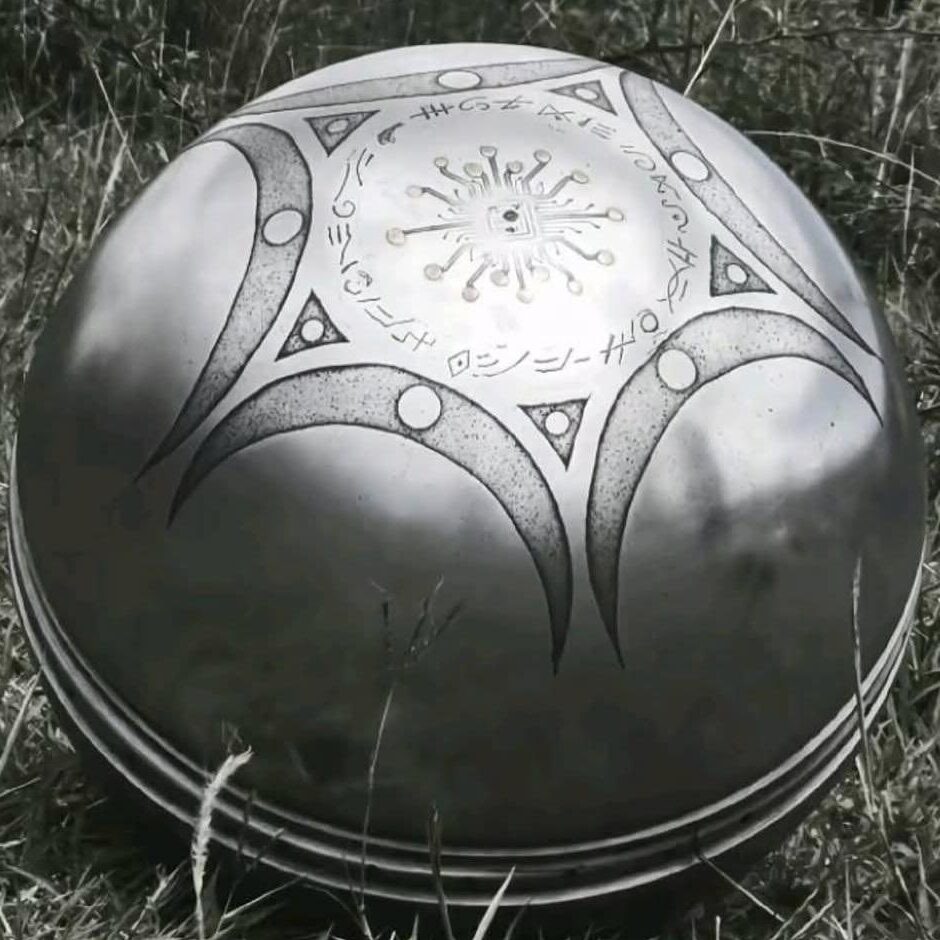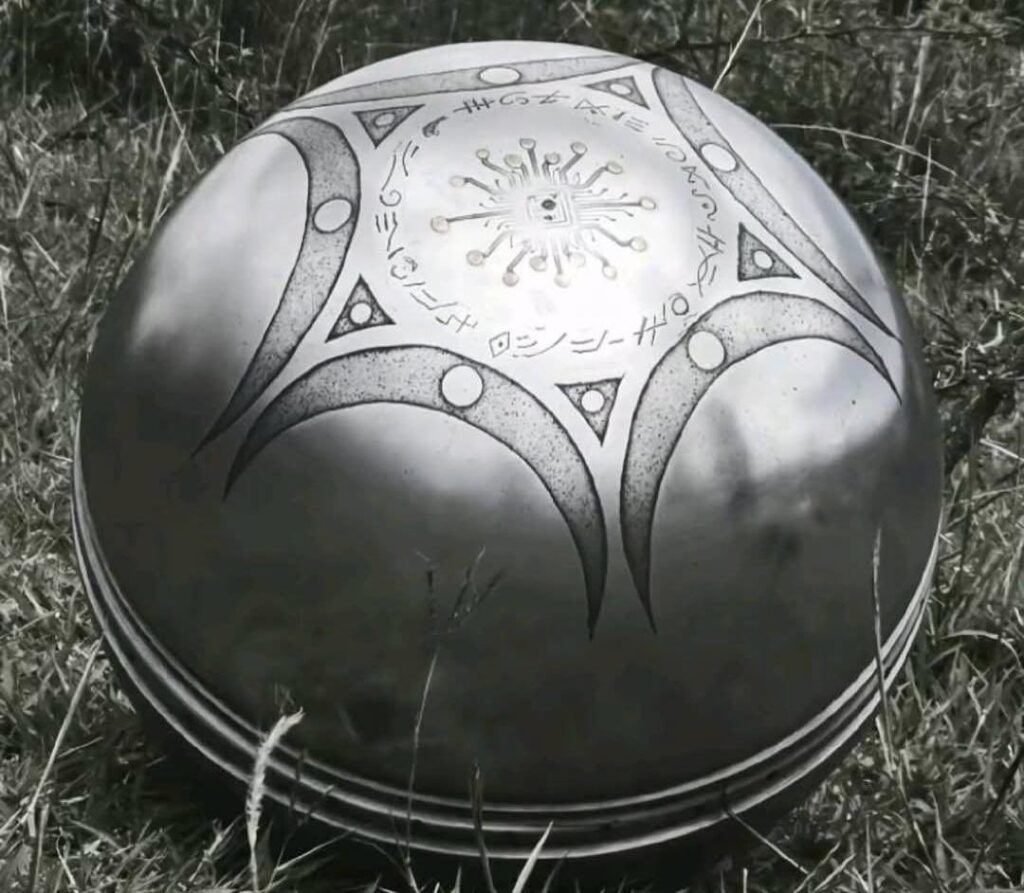Buga UFO Sphere

On April 29, 2025, Jaime Maussan reported through Maussan Televisión an astonishing case involving a mysterious sphere that appeared—and possibly crashed—in Buga, Colombia. The event first came to light on March 26, 2025 when a video surfaced on social media showing a strange, luminous sphere. At first, little was known about the footage: no clear information about its origin, who filmed it, or the specific location beyond a vague connection to Colombia. Just a few days later, a second video emerged, revealing that both recordings had taken place in the town of Buga and were captured by two different witnesses. This second piece of footage began to solidify what would become one of the most compelling UFO incidents in recent memory.

The first video, now attributed to a young woman named María, showed the sphere moving with intelligence—clearly not a balloon or conventional object. The sphere glowed with various colors and had a metallic appearance. The movements weren’t erratic or random; they seemed purposeful, deliberate. Then came the second video, this time captured by a man in the mountains near Buga. He had been using electromagnetic equipment to search for buried treasure, and it raised the possibility that the sphere had been attracted to those devices.
What truly shocked viewers was what happened next. The sphere began to descend—not crash—and the witness moved closer to it. Choosing to remain anonymous for his safety, the man reached the object, which weighed approximately 2 kilograms. Despite the risks, he picked it up with his bare hands. For the first time (in a while), a civilian had physical possession of a sphere—an object that resembles the ones seen flying worldwide, such as the one spotted recently on the runway at Manchester Airport, which ascended before contact could be made. But in Buga, someone finally held one.
This object was eventually handed over to Daniel Vélez, known locally as “El Potro,” an entrepreneur from Buga and co-owner of a company called Germany, which manufactures electromagnetic devices designed to detect metals, treasures, or even mineral deposits underground—sometimes even oil. With that, a formal investigation into what became known as the Buga Sphere began.
Scientists at the Germany company discovered unusual features. On the upper surface of the sphere was an intricate figure that defied easy classification. More strikingly, they identified what appeared to be a quantum chip embedded in the sphere, surrounded by a belt-like structure dotted with small colored points. The discovery marked a major moment in human history: for the first time, the public—not just governments or military agencies—had physical evidence of one of the unidentified objects that have long stirred global curiosity and speculation. The case is ongoing and continues to raise deep questions about who or what created the Buga Sphere, why it descended near a civilian, and what its purpose may truly be.
This unprecedented find has also revived public interest in other mysterious metallic spheres that have surfaced in recent history, notably the Betz Sphere, Jim Marlin’s Sphere, and the Juanito Juan Sphere. Back in 1974, the Betz family discovered a similar sphere in Florida that quickly gained attention for its strange behavior—it rolled on its own, made humming noises when music played, and defied gravity by not falling off sloped surfaces. X-rays showed two internal components and a shifting magnetic field inside, leaving experts puzzled. Some thought it might be a lost piece of industrial equipment, while others leaned toward the possibility of something non-human in origin. In another case from the 1970s, a man named Jim Marlin came into possession of a heavy, metallic sphere—roughly 50 pounds—that a friend claimed had fallen from a UFO in New Mexico. Marlin reported bizarre effects while handling the object, including one moment where he was thrown across the room by a sudden burst of light, suggesting the sphere had some form of active or reactive energy. It was also strongly magnetic. Then there’s the Juanito Juan Sphere, tied to Mexican contactee Juanito Juan, who has reportedly had multiple sightings and encounters with airborne metallic spheres. While that object hasn’t been as extensively analyzed as the others, Juanito’s consistent documentation—including photographs—adds weight to his story. The frequency of these appearances and their similarity to other cases suggest a recurring phenomenon that deserves closer attention.
What ties these cases together—whether it’s Buga, Florida, New Mexico, or rural Mexico—is a pattern of metallic spheres behaving in ways no known technology can explain. They seem to move with purpose, interact with their environment, and in some instances, show signs of internal complexity or even intelligence. The Buga Sphere might just be the latest in a series of clues pointing toward a much larger mystery.
The investigation into the mysterious Buga Sphere took an even stranger turn as scientists from the Germany company began analyzing the object in their lab. Initially, the sphere weighed around 2 kilograms when it was picked up in the hills, but once it was placed on a calibrated scale at the lab, its weight had jumped to 10 kilograms. This unexpected change sparked theories that the sphere’s internal levitation system might have still been partially active when it was first recovered. Based on its size and assuming it’s made entirely of metal, the object should weigh around 80 kilograms, not just 10. Oddly enough, when exposed to fire, it didn’t heat up—even under temperatures as high as 400°C. When water was poured on it, the water evaporated instantly, yet the surface of the sphere remained completely cold to the touch.
Another unusual characteristic was a set of black bands wrapping around the surface, and what appeared to be a quantum chip embedded within a belt-like structure marked with colored dots. Early observations led the researchers to believe they might extract some form of advanced knowledge from the object—possibly reverse-engineering its technology. However, they quickly realized this would be far more difficult than they imagined. They noticed that the areas touched by water became shiny while the sphere stayed ice cold—something that shouldn’t be physically possible under normal conditions.
Eventually, the weight of the sphere was officially measured at 9.99 kilograms and seemed to increase slightly day by day, adding yet another layer of mystery. The case was notable not just for its strangeness but because this artifact was in the hands of civilians—not the military—which opened up new possibilities for public and scientific access. Unlike video footage, which can be forged, this was a tangible object that had traceability: the man who filmed it watched it descend about 50 meters away from him, ran to it, and physically retrieved it. That means this wasn’t just a rumor or blurry sighting—it was a direct contact with a flying object, now proven to weigh at least 10 kilograms, yet lacking any known propulsion system.
At this point, Jaime Maussan began working closely with David Vélez, also known as “El Potro,” the businessman who first received the sphere. According to Maussan, Vélez was overwhelmed by the public pressure and endless messages bombarding his company, Germany, through social media and private messages. Maussan suggested to Vélez that he publicly state the sphere had already been transferred to him in order to ease the pressure. Vélez agreed and even sent Maussan a voice message explaining that the public reaction was overwhelmingly positive once people heard the sphere was in the hands of a reputable investigator. The pressure stopped, and even those harassing other witnesses—such as Don José—stood down after being told the object was under Maussan’s care in Mexico.
This turn of events gave Maussan full access to the investigation, prompting him and his team to travel to Colombia—from Cali to Buga—to follow the case on-site. He described the journey as one of the most exciting adventures of his life. While in Cali, he conducted an in-depth interview with David Vélez, a portion of which he planned to release on social media. During the interview, Vélez opened up about his lifelong wish to make contact with something otherworldly. Though he’d seen strange objects in the past—like hot-air balloons or fire lanterns—this was entirely different. He confessed that he had developed several theories: maybe it was a meteorite, a satellite part, or even a communication device. But none of those theories made sense. He doubted a 10-kilogram satellite component could survive in such a compact form, especially since satellites are typically built from extremely light, high-density materials and don’t operate within the Earth’s atmosphere.
This admission from Vélez underscored the object’s puzzling nature. Despite brainstorming many possible explanations, nothing he proposed could account for all the observed properties: the abnormal weight change, heat resistance, evaporation effect, apparent levitation, and exotic materials. The Buga Sphere remained an open question—an object that defied conventional science and whose origins and purpose had yet to be uncovered. The case, still under investigation, was becoming one of the most important UFO-related incidents ever documented, and this was only the beginning.
Germany’s team eventually agreed to distance themselves entirely from the sphere. They concluded that maintaining any official link with it could bring unnecessary complications to their company. As a result, they formally disassociated themselves from the case, stating that the artifact no longer had any connection to the firm or its employees. The sphere had been officially handed over to Jaime Maussan, and authorities in Colombia—including police, military, and other governmental institutions—approved its release. The object, they believed, was too powerful and too mysterious to remain in Colombia, where it could potentially attract international problems or espionage.
What truly raised eyebrows was the claim that Russia had shown interest in acquiring the sphere. There were allegedly offers to exchange the artifact for any resource or favor they needed—suggesting that major global powers viewed it as an object of technological value. But Vélez and his team felt that letting it fall into the wrong hands could lead to dangerous consequences. If it were reverse-engineered in a hostile or reckless manner, the result could be catastrophic. This wasn’t a helium balloon or some painted styrofoam, he emphasized—it was heavy, metallic, and unnaturally cold. Anyone who doubted it could come and see or feel its weight themselves.
For Maussan, the delivery of the sphere into his care was a moment of deep honor and responsibility. He received it with excitement and a firm belief that the object must be studied at the highest level, not just for curiosity’s sake but for the potential benefit of humanity. The main witness, who had first retrieved the sphere from the hills of Buga, also agreed that moving it to Mexico for further study was the right choice. He even insisted that the credit should go to Maussan, who had come all the way from Mexico to investigate. “Anyone can watch something fly by,” the witness said, “but to actually retrieve it and reveal it to the world—that’s a different story.”
Transporting the sphere to Mexico was an unprecedented act, something that had never been done before with such an artifact. For Maussan, it marked the beginning of a daunting but thrilling responsibility. The object was now in his possession—solid, weighing over 10 kilograms, and containing what appeared to be internal circuits, strange engravings, and porous crescent-shaped markings that looked like tunnels or cavities leading inward. On one side, a belt-like structure circled the object. It appeared to contain a quantum chip. Most striking of all, the sphere clearly demonstrated levitation—but exactly how it achieved this remained unknown.
This wasn’t just a mysterious orb—it was a profound discovery. The Buga Sphere may represent one of the most significant physical pieces of evidence ever recovered in the ongoing mystery of unidentified aerial phenomena. As Maussan concluded, the real investigation had only just begun.
The Buga Sphere’s discovery may represent more than an isolated event; it could be a node within a broader, concealed network of intelligent, autonomous spheres operating across the globe. Researchers posit that these spheres function as part of an AI-driven surveillance system, strategically positioned near significant human activities and locations. These spheres exhibit behaviors indicative of deliberate monitoring, rather than random or natural phenomena. The theory is that smaller spheres act as relays for larger ones, forming clusters that align in patterns reminiscent of microwave communication networks. These spheres are believed to reside in remote or abandoned areas, remaining dormant until activated by specific signals, after which they emit high-energy microwaves and other detectable emissions. This perspective aligns with observations of similar spheres at various locations and events, suggesting a coordinated, possibly non-human, effort to monitor and perhaps influence human activity. The Buga Sphere, with its advanced features and unexplained behaviors, may thus be a tangible manifestation of this hidden network, prompting a reevaluation of our understanding of such phenomena and their implications for humanity.

